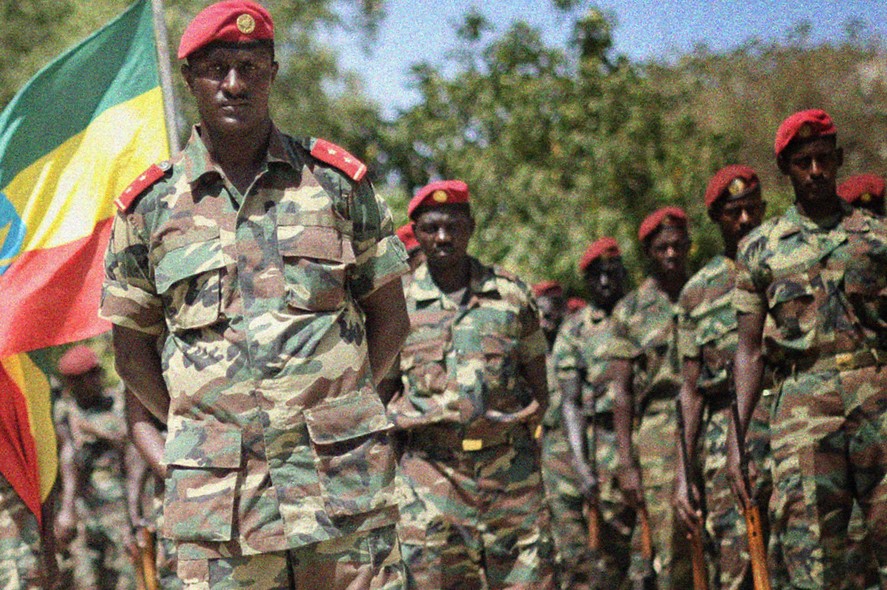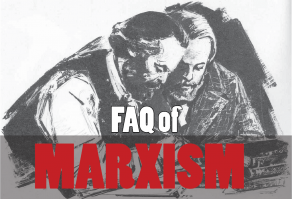The civil war in the northern Ethiopian region of Tigray entered a new phase over the last few weeks when Tigrayan rebels recaptured Mekele, the regional capital, and forced the federal government forces to retreat. The swift defeat of the Ethiopian forces was a stunning reversal in a civil war that has led to the displacement of nearly two million people in the Tigray region, widespread hunger and atrocities on all sides.
The Ethiopian National Defence Force troops and their Eritrean allies had occupied the city for months, following the start of the war last November. Prime Minister Abiy Ahmed was quick to declare victory late last year with the fall of Mekele. But as we explained at the time, the Tigrayan forces will not be defeated so easily. The Tigray People’s Liberation Front (TPLF) forces are made up of battle-hardened fighters with decades of experience in guerrilla war and have very capable officers. Now, eight months on, the war is still raging and the TPLF have recaptured Melele, turning the situation on its head.
[For further analysis on the outbreak of the war, see Ethiopia’s Tigray crisis: Socialism or barbarism]
Swift and sudden change
Over the last few months, the Tigray Defence Forces (TDF), the armed wing of the TPLF, appeared to be pinned in the mountains by combined Ethiopian and Eritrean forces. Over the last few weeks, however, the fortunes of the federal forces fell apart spectacularly. They were forced to flee Mekele in the face of a seemingly unstoppable rapid advance of the Tigrayan rebel forces. In mid-June, the TDF forces came down the mountains to launch ‘Operation Alula’ (named after a 19th century general). Using a combination of light mobility forces and heavy artillery, they outflanked the federal forces and then smashed their way through the enemy lines with lightning speed. An insurgency as locals joined the TDF forces in droves provided the final nail in the coffin. The federal government forces were routed and sent fleeing. The TDF has subsequently won a series of battles over the last few weeks, destroying almost half of the Ethiopian army’s eight divisions.
 After temporarily abandoning the regional capital of Mekele, the Tigray Defence Forces have recaptured the city after a rapid maneuver that overran the federal government's forces / Image: Voice of Tigrayans, youtube
After temporarily abandoning the regional capital of Mekele, the Tigray Defence Forces have recaptured the city after a rapid maneuver that overran the federal government's forces / Image: Voice of Tigrayans, youtube
The Ethiopian army initially denied this, calling these reports ‘fake news’. However, it became clear on 28 June that the TDF had mounted a stunning comeback. Over the past week, it marched on Mekele and recaptured the city. On Friday the scale of the victory became clear when Tigrayan forces marched thousands of captured federal government troops through the streets of the recaptured Mekele amid scenes of wild celebration by the local population. Flanked by Tigrayan fighters, the columns of defeated Ethiopian soldiers had been marching for four days from battlefield camps where they had been held since the fighting ended this week. They were marched through the streets of the capital and were taken to a large prison on the northern edge of the city.
Abiy outmanoeuvred
Prime Minister Abiy Ahmed was quick to declare a unilateral ceasefire. This is a huge retreat and a bitter pill to swallow for Abiy Ahmed who claimed in November that all he was doing was launching a ‘law enforcement operation’ to arrest ‘criminal elements’ in the Tigray leadership and that the operation would last no longer than a few days. Now the conflict in Tigray has overturned Abiy’s plans and put him on the backfoot. Not so long ago, he was riding high in the wake of his 2019 Nobel Peace Prize for domestic reform and forging a peace deal with neighbouring Eritrea.
Abiy’s recently declared ceasefire is no less than an admission of defeat by his government in the battle for Mekele. The fact is that the TPLF forces did little to defend Mekele when the federal government initially attacked the city in November. Instead, they made a tactical withdrawal into the countryside, rearmed and prepared to launch a long-term insurgency. The TPLF, a peasant organisation with decades of experience in guerrilla warfare, is very popular in rural Tigray.
This is a strategy that they employed with great success in the past. General Tsadkan Gebretensae, a very competent commander of the TDF who led the latest operation, was the commanding officer who also led the rebels in the civil war against that the Derg regime which was in power between 1974 and 1991, culminating in the capture of Addis Ababa, and the overthrow of Mengistu. The recent operations bear many of the hallmarks of the earlier campaigns that he led.
Conjuring forces he could not control
Eight months into the war against Tigray, it is clear that Prime Minister Abiy Ahmed has conjured up forces he cannot control. In early November 2020, Abiy said that Tigrayans had attacked a national military base in the north of the country. He responded by sending troops to the region, which is governed by the TPLF, a political party that once held major influence across the country. In a televised broadcast days later, Abiy announced that the Ethiopian military had bombed Tigray, destroying weapons near the regional capital of Mekele.
 Prime Minister Abiy Ahmed had tried to brush off the situation in Tigray. He has now called a unilateral ceasefire, acknowledging that this represented a serious defeat. Ahmed pictured receiving the Nobel Peace Prize in 2019 / Image: Bair175, wikimedia commons
Prime Minister Abiy Ahmed had tried to brush off the situation in Tigray. He has now called a unilateral ceasefire, acknowledging that this represented a serious defeat. Ahmed pictured receiving the Nobel Peace Prize in 2019 / Image: Bair175, wikimedia commons
Meanwhile, Abiy Ahmed called on Eritrea for assistance. Eritrean President, Isaias Afwerki, a long term enemy of the TPLF, sent the Eritrean army to the Tigrayan border. This raised the tensions to fever pitch. On 14 November, Tigrayan forces fired missiles at targets in Eritrea. The conflict soon escalated, with reports of fighting between Ethiopian forces and Tigray rebels but also the arrival of Eritrean soldiers who had crossed the border. In the ensuing crisis, there were massacres that left hundreds of people dead. Tens of thousands fled as refugees to neighbouring Sudan amid fears of a full-blown civil war. United Nations agencies said this month that more than 350,000 people in Tigray are suffering famine conditions, while millions more are at risk.
Earlier this year, TPLF said the death toll from the Tigray conflict came to at least 52,000, while the United Nations said more than 61,000 Ethiopians fled into Sudan. In February, Amnesty International released a report that stated that Ethiopian and Eritrean forces had committed war crimes during an offensive to take control of the town of Axum, with one massacre by Eritrean troops during a roughly 24-hour period over 28-29 November. Eritrean troops went on a rampage and systematically killed hundreds of civilians in cold blood.
A deepened crisis
On the surface, the recapture of Mekele by the TPLF has rewound the situation back to where it was at the start of the war. In reality, the war of the last eight months has fundamentally changed the situation. Its effects will have far-reaching consequences for the country and the region.
Tigrayan territory is now a battleground of four different forces fighting on multiple fronts, all with their own interests. On one side there are the Tigray Defence Forces. They hold territory in rural parts of the Central Tigray Zone, as well as some areas of the Eastern, South-eastern and Southern Tigray Zones. Those forces are pitted against the Ethiopian military, which occupies towns and cities; Amhara regional forces which patrol most of western Tigray and parts of southern Tigray; and the Eritrean army, which is present mostly in the northern sections of North-western, Central and Eastern Tigray Zones. In early 2021, the Eritreans were also involved in combat further south.
Most of the fighting over the past few months has occurred in central Tigray – where Tigrayan leaders retreated following the withdrawal from Mekele – and increasingly in the two southern areas. Battles erupted for instance in Samre district in South-eastern Zone on 14 February, and again in March, as well as further south in several locations. In February, fighting clustered around Abiy Adiy broke out between Tigrayan forces on the one side, and Ethiopian and Eritrean forces on the other. More recently, the Ofla and Endamehoni districts in southern Tigray experienced heavy fighting, with Tigray forces claiming victory over Ethiopian and Eritrean troops. Tigrayan forces also staged a deadly attack inside the Amhara region on 18 March, drawing Amhara forces into the war.
The entrance of Eritrea, which has long had a border dispute with Tigray, has deepened the ethnic and nationalist tensions in the region. Eritrea, an extremely closed-off country, was once part of Ethiopia but gained independence in 1993 after a 30-year struggle. From 1998 to 2000, the war between Ethiopia and Eritrea left tens of thousands dead. That war was led by the same generals who are now commanding the Tigrayan forces. The two countries remained enemies for decades. The presence of Eritrean troops on Tigrayan soil to help the Ethiopian government rallied the masses behind the TPLF. Memories of the brutal war with Eritrea are still fresh in the minds of many Tigrayans. The presence of Eritrean soldiers in northern Tigray rampaging through villages and committing atrocities in the course of the war has inflamed Tigrayan popular sentiment and has galvanised the population behind the TPLF. This is ultimately the reason for the huge counter-offensive that resulted in the TPLF’s recapture of Mekele a few days ago.
Regional consequences
The alliance Ethiopia forged with Eritrea and fighters in the Amhara region could fracture as Ethiopian troops continue to pull back from direct engagement, and Tigray fighters go on the offensive. Anti-Tigray sentiment is the only thing that has held the alliance between Abiy Ahmed and the leaders of the Amhara region together. With the defeat at Mekele, the Amhara leaders could see Abiy as weak, which could prompt them to withdraw their support. This could inflame Amhari national sentiment and boost support for secessionist movements in that region. In the end, this could have a domino effect on the different ethnically divided regions. The war has inflamed support for Tigrayan secession from the Ethiopian federation. Pro-independence sentiments could inflame the Amhara-Tigray territorial dispute, and could, in turn, destabilise Eritrea, causing many years of war and the breakup of the country.
All sides in the conflict in Ethiopia’s northern region appear to be preparing for a protracted war. The conflict could well last for months, or even years, an outcome that would be even more disastrous for Tigray and the rest of the country. The war in Tigray has the potential to turn into a grinding stalemate. The recent successes mean Tigrayan forces can sustain a long term insurgency. Meanwhile, the federal government is now showing signs of demoralisation as indicated by the hasty retreat from Mekele. A drawn-out conflict would lead to even greater suffering for civilians, potentially subjecting those in inaccessible areas to mass starvation. It would also threaten Ethiopia’s stability and potentially that of the Horn of Africa.
The incursion of Amhara combatants into Tigray has worsened the situation. Even though the western areas are relatively quiet at present, a sustained Amharan presence could trigger years of instability as many Tigrayans strongly reject the Amhara presence.
Additionally, the reliance of federal forces on Eritrean support has grown amid Ethiopia’s armed confrontation with Sudan over a disputed borderland. In mid-December, clashes broke out in the al-Fashaga area along the Ethiopian-Sudanese border after the Sudanese military, taking advantage of Ethiopia’s distraction by the Tigray conflict, moved to take control of territory it claims the Ethiopians occupied from the mid-1990s. The hostilities, which have also drawn in Eritrean forces, are a disaster for the Amhara leaders, as farmers from the region were evicted by Sudan’s incursion. The border fight means that, for now, an Eritrean exit from Tigray would further stretch Ethiopia’s military, unless they reposition troops to Ethiopia’s Sudanese border. This is a dangerous situation for the whole Horn of Africa.
The war will continue as long as the federal government is unable to fully achieve the key objectives of its intervention: the disarmament of the TPLF, the prosecution of all wanted Tigrayan leaders, and the re-establishment of a constitutional government in Tigray. This is key to the centralisation of power in Abiy Ahmed’s hands. If he backs down without achieving his aims, he will be left severely weakened, leaving him open to a power struggle inside his Prosperity Party. It could also galvanise pro-secessionists movements all over the country.
 The conflict in Tigray has already drawn in Eritrean forces, which have a border dispute with the region. Sudanese forces have also taken the opportunity to intervene in their own interests. The conflict has the potential to destabilise the entire region / Image: wikimedia
The conflict in Tigray has already drawn in Eritrean forces, which have a border dispute with the region. Sudanese forces have also taken the opportunity to intervene in their own interests. The conflict has the potential to destabilise the entire region / Image: wikimedia
The war poses a serious threat to Ethiopia’s overall stability and potentially to that of the entire Horn of Africa. It will exacerbate national fault lines and tensions in the region such as the mounting inter-communal killings in Benishangul-Gumuz region, bordering Sudan in the west, and simmering discontent in the country’s largest region of Oromia. Growing hostilities with Sudan complicate the picture further. In Oromia, which has its own low-intensity insurgency, political discontent runs high, although the opposition is relatively fragmented at the moment. If fighting intensifies in Tigray and the clashes with Sudan escalate, a protracted conflict risks sparking unrest throughout the region.
In Tigray, the federal government cannot eradicate the armed resistance, which appears to be entrenched in rural areas and commands widespread popular support. On the other hand, the Tigray Defence Forces cannot spread the war to other regions without plunging the whole country into civil war. In addition, the Eritrean and Amharan forces are now part of a delicate balance in Tigray. President Isaias Afwerki of Eritrea is a long term enemy of Tigray and cannot relent on the pressure on the TPLF without settling the border dispute. This opens a prospect of the war turning into a protracted, frozen conflict, with devastating consequences for the people of the region.
For a revolutionary solution!
From 1991, Ethiopia was run as a federation based on ethnic lines. The ruling cliques entered into this ‘ethnic’ federation claiming that it would ‘prevent the breakup of the country’. The coalition, known as the Ethiopian People’s Revolutionary Democratic Front (EPRDF) consisted of four main political parties, largely split along ethnic and geographic lines. It followed a federalist approach that gave significant power to Ethiopia’s regions, but the coalition controlled all levers of power and repressed almost all political opposition. While there is a central government, its constituent parts are carved out along ethnic lines. This system has allowed political power in Ethiopia to be concentrated in the hands of a few. Abiy Ahmed’s attempts to centralise power in his own hands has now severely destabilised this balance. In the end, he has simply inflamed reactionary national sentiment on all sides.
Abiy’s top-down, unilateral pan-Ethiopian reform effort has deeply destabilised the whole political situation and, in the long run, may lead to the breakup of the country. This will be accompanied by barbarism on an unimaginable scale. The war with TPLF could drag on for years, with no clear winner. Barbarism is all capitalism has in store in its period of death agony. The people of Somalia, Eritrea, Ethiopia, and in the Horn of Africa generally, have suffered from brutal conflicts for decades. A civil war in Ethiopia has the potential to further deepen the barbarism in the region. These conflicts arise from the narrow self-interests pursued by all the ruling cliques at the expense of the people of Ethiopia. Now the country is heading for a catastrophe. The only way out for the people in the region – and for the African people generally – is the path of revolution and the establishment of a socialist federation of Ethiopia with full national and democratic rights for the different nationalities.



